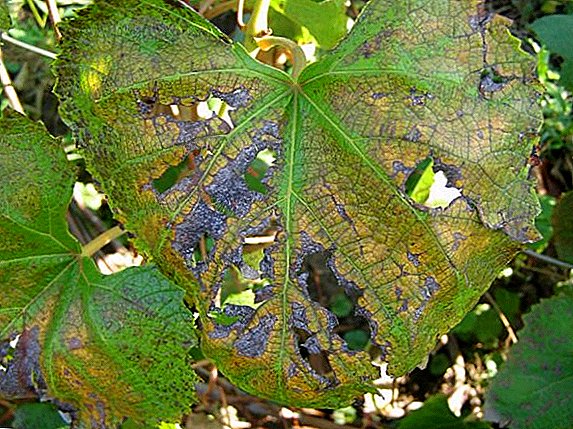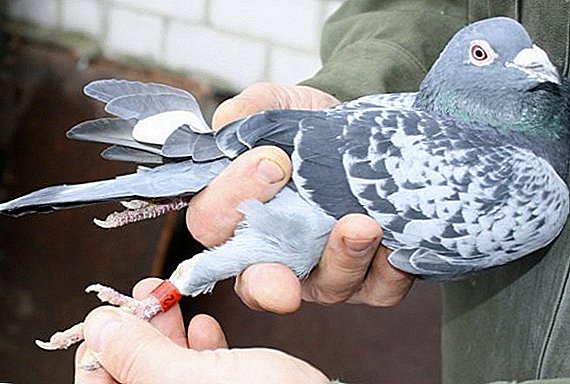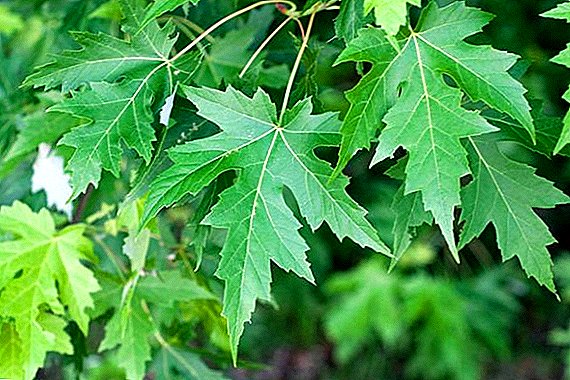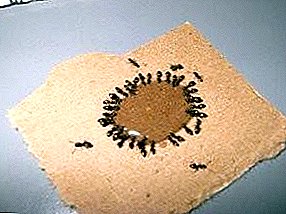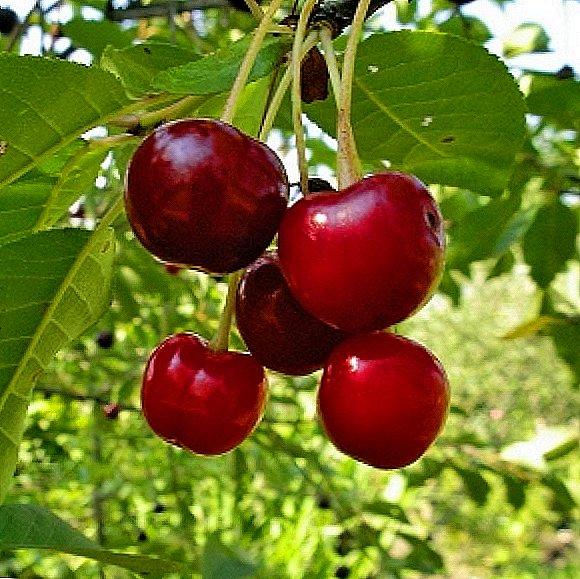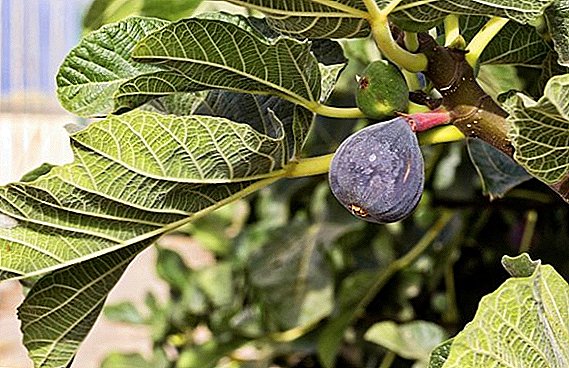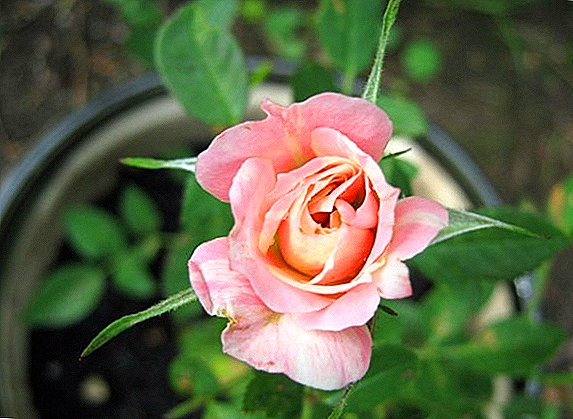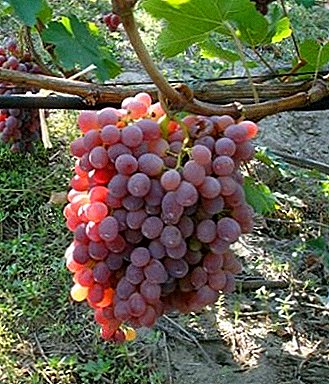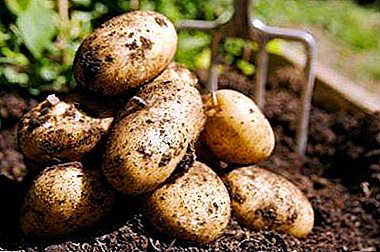
At the dacha plots mainly vegetables are grown, and a large area for planting is given to potatoes. As a result, the required crop rotation is not always possible.
Potatoes are often affected by diseases that arise as a result of the annual planting of vegetable crops at the same place. Such scars include scab, affecting potato tubers. The article tells how to deal with this ailment, a detailed description of the disease and recommendations for treatment.
General provisions
It is caused by a group of microscopic pathogens, bacteria and actinomycetes. Basically, the external tissues of leaves, stems, flowers, and fruits are affected by scab.
The main symptoms of this disease:
- peeling the cuticle;
- violation of the integrity of the surface of the peel;
- the appearance of spots of irregular shape;
- the presence of medium-sized ulcers and warts, having a dry rim on the fruit.
 Potatoes, like other vegetable crops, are highly susceptible to scab. Today, at least four types of the disease are known. They, in turn, are characterized by certain features and differ from each other. Accordingly, prevention and treatment measures may also differ. There are:
Potatoes, like other vegetable crops, are highly susceptible to scab. Today, at least four types of the disease are known. They, in turn, are characterized by certain features and differ from each other. Accordingly, prevention and treatment measures may also differ. There are:
- common scab;
- silver;
- powdery;
- black.
Silver scab is the most insidious species, spores can be well preserved even at a temperature of + 3 ° C, thus storing adjacent tubers during storage. Silver scab is caused by the fungus Helminthosporium solan, which spreads only in the skin of potatoes. The tuber can be stored for a long time without showing any special symptoms of rotting, but it will lose moisture and dry out. The first sign of the disease is a significant thinning of the skin. Also dangerous symptoms are the appearance of a silvery shade and brown spots.
Powder scab - a fairly common type, which manifests itself in the form of slimy coma moving independently. Aggressively affects not only the fruit of the vegetable, but also the underground part of the stem. When storing potatoes in wet places, the process of rotting develops. And on the infected areas of the tuber, late blight and dry rot develop rapidly. Powder scab in dry soil at a temperature of + 12-15 ° C feels good. The lifetime of the fungus is 5 years.
Where and when is formed?
The scab pathogen is in the soil, so it is not always possible to permanently destroy it. Bacteria mostly overwinter in fallen leaves, and the peak of the exacerbation of the disease falls in the spring when it becomes warm and humid outside.
Also, for the successful development of this disease, certain parameters are important:
- air temperature + 25-30 ° C;
- sandy, loose, dry soil;
- the presence of large quantities of organic fertilizer in the soil, in particular humus;
- alkaline earth;
- lack of manganese and boron in the soil, and an excess of calcium and nitrogen;
- air humidity not less than 70%;
- lack of immunity in the root to the disease.
What is dangerous?
 Potato tubers affected by fungal disease do not harm human health. I.e if you eat the grown product for food, you don’t get to the hospital. However, whether it will be nice to cook is another question.
Potato tubers affected by fungal disease do not harm human health. I.e if you eat the grown product for food, you don’t get to the hospital. However, whether it will be nice to cook is another question.
Scab - an unpleasant phenomenon that lowers the nutritional value of potatoes, it loses a significant amount of starch. Also reduces the process of keeping root and causes rot. Scab is the cause of loss of crop quality, loss of presentation, infects crops, affects the resistance of plants to other diseases.
What cultures are striking?
Fungal disease is not only a disease of vegetable crops, but also the main enemy in the garden. Pathogens affect:
- potatoes;
- beetroot;
- carrot;
- citrus fruit;
- apples;
- pears;
- cherries;
- grapes;
- houseplants.
The greatest damage this disease brings to potatoes, apples, pears, worsening their appearance and quality of fruits. In this case, the fungal infection in each case is different. This disease occurs mainly in temperate latitudes.
How to detect?
The appearance of this disease is noted on the tubers, stem, leaves, and even flowers.
Microscopic parasite affects the peel and looks like dark dry spots, unpleasant to the touch. As the disease progresses, the fruits become deformed, the leaves become weak and fall off prematurely.
Unfortunately, in the early stages of the disease is practically not diagnosed. It can be recognized only after digging up the potato tubers from the ground.
Scab actively progresses in wet, rainy weather. This is due to the fact that the spores of the fungus develop in a liquid-droplet medium, where, after the defeat of one tuber, it spreads to the next one until everything becomes ill.
A photo
In the photo you can see the look of potato tubers affected by scab.





Principles of protection and struggle
However, a positive point in this situation is the factor that scab can and must be fought. For this, a whole set of measures should be planned for the treatment of the root crop.
How to get rid?
- For planting choose a grade resistant to scab and suitable for the conditions of your region.
- Before planting, the tubers should be carefully inspected, patients should not be planted.
- Store potatoes in a cool and dry place.
- To poison the seeds of the root with potent chemicals. For example, Maxim, Fitosporin, Polycarbotsin.
- Try to change the place of planting potatoes. After all, pathogens can live in one place for up to 5 years.
- Do not plant potatoes in the garden, where they grew carrots, beets, because they also suffer from this disease.
- After the entrances and during flowering, the bushes are processed with Epin and Zircon growth stimulants.
- In the soil before planting can not add fresh manure.
How to treat the earth?
After harvesting potatoes, in the autumn the beds should be planted with siderata, which should be used as mustard, legumes or cereals.
They are natural antiseptic and disinfectants, prevent the reproduction of pathogenic fungi, protect crops from the attack of harmful insects.
 When the synderates grow by about 20 cm - the area is dug up, mixing the sprouts with the ground. In spring you can sprinkle mustard powder soil.Since scab grows well in alkaline soils with a lack of manganese and boron. Therefore, it is recommended to add the following types of mineral fertilizers to the soil in springtime:
When the synderates grow by about 20 cm - the area is dug up, mixing the sprouts with the ground. In spring you can sprinkle mustard powder soil.Since scab grows well in alkaline soils with a lack of manganese and boron. Therefore, it is recommended to add the following types of mineral fertilizers to the soil in springtime:
- ammonium sulfate;
- superphosphate;
- Kalimagnezia;
- copper sulfate;
- manganese sulphate;
- boric acid.
Varieties are resistant to the disease and phytophthora
If, while observing all the above actions, there are no results, then you should change the potato variety and choose a more resistant to scab. For example:
- Bronitsky grade. This potato is appreciated for its resistance to scab, alternariosis, black leg. It has excellent taste characteristics. Ideal for french fries. The color of the pulp is white. Productivity is 350-550 kg from 100 sq.m. Fruit weight about 100 grams. Ripening period 80-85 days.
- Alena is an early ripe variety. The shape of the tuber is rounded. The color is red. The flesh is white. The variety is also not exposed to potato cancer, is not afraid of drought, but is less resistant to late blight. Good for frying process. Productivity is 170-100 kg from 100 sq.m. Fruit weight about 87-156 grams. Ripening period 60-70 days.
- Snow White sredneranny potatoes. Differs in excellent keeping quality, resistance to diseases. It has a nice appearance: white smooth skin and very small eyes. Productivity is 160-250 kg from 100 sq.m. Fruit weight about 65-117 grams. Ripening period 70-80 days.
- Resource - this species is quite valuable for its endurance. It tolerates drought, is resistant to disease and mechanical damage. It tastes good. The color of the fruit is light yellow. Productivity is 400-450 kg from 100 sq.m. Fruit weight about 100 grams. Ripening period 80-85 days.
- Pace - late vegetable variety. The shape of the tubers is round, flat. The color is light yellow with creamy flesh. Stored and transported well. Good taste, especially preferred for mashed potatoes. Productivity is 550 kg from 100 sq.m. Fruit weight about 80-130 grams. Maturation term is 120-130 days.
- Spring - superearly variety. Among the positive aspects of this vegetable: high yield, good taste characteristics, almost not subject to fungal diseases. Spring has an oval shape of tubers and light pink color. The flesh is white. Productivity is 320-400 kg from 100 sq.m. Fruit weight about 80-130 grams. Ripening period 70-75 days.
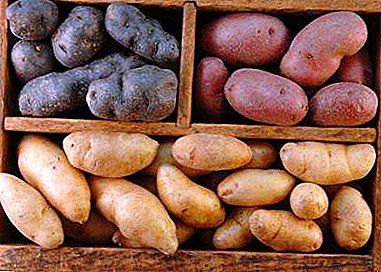 Nevsky - the grade checked by time. It is delicious, productive, has good immunity. The tuber is even and smooth, the shape is oblong, the color is light yellow. The flesh is white, and can not blacken for a long time. Productivity of 250-350 kg from 100 sq.m. Fruit weight about 80-130 grams. Ripening period 75-85 days.
Nevsky - the grade checked by time. It is delicious, productive, has good immunity. The tuber is even and smooth, the shape is oblong, the color is light yellow. The flesh is white, and can not blacken for a long time. Productivity of 250-350 kg from 100 sq.m. Fruit weight about 80-130 grams. Ripening period 75-85 days.- Red scarlett knowingly bears such a name. The fruits are bright, beautiful, regular shape. The skin color is pink, small eyes. At the same time, the flesh is light yellow. It has a long keeping quality. Productivity is 250-550 kg from 100 sq.m. Fruit weight about 80-120 grams. Ripening period 75-90 days.
- Luck one more grade which corresponds to the name. He is an early, high-yielding, deadly, not prone to diseases. Therefore, it is considered a really successful instance among the rest of the brethren. Oval tubers and yellow skinned. Productivity of 300-550 kg from 100 sq.m. Fruit weight about 120-150 grams. Ripening period 60-70 days.
With all the recommendations and measures of prevention, it is possible to completely eradicate the infection in 2-3 years. However, it is worth noting that when planting resistant varieties, preventive tillage should still be done. Thus, provide yourself with potatoes for the whole year.


 Nevsky - the grade checked by time. It is delicious, productive, has good immunity. The tuber is even and smooth, the shape is oblong, the color is light yellow. The flesh is white, and can not blacken for a long time. Productivity of 250-350 kg from 100 sq.m. Fruit weight about 80-130 grams. Ripening period 75-85 days.
Nevsky - the grade checked by time. It is delicious, productive, has good immunity. The tuber is even and smooth, the shape is oblong, the color is light yellow. The flesh is white, and can not blacken for a long time. Productivity of 250-350 kg from 100 sq.m. Fruit weight about 80-130 grams. Ripening period 75-85 days.